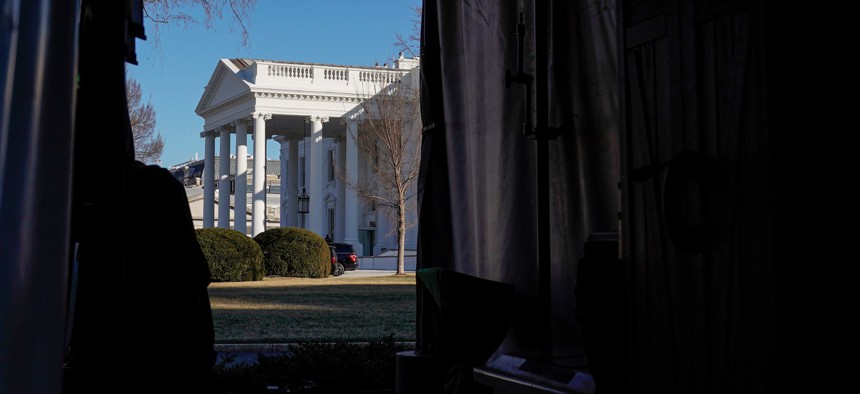The White House Is Looking to Focus Service Delivery Around 'Life Events'
The Biden administration is fleshing out a plan to organize government services around the needs of Americans and not around agency org charts.
The White House wants to fundamentally change the way Americans access government services and benefits by focusing on the "life experiences" of those seeking assistance.
The effort was teed up in a December 2021 executive order on customer experience which, officials said, would create a "sustained, cross-government service delivery process" aligned with life events that often require interaction with the government.
For Americans facing retirement, surviving a disaster, transitioning out of the military, having children or experiencing financial shock, the Biden administration wants to offer a path to services that doesn't require knowledge of how the government is organized.
"The federal government was created over more than two centuries into a patchwork of agencies and statutory responsibilities spread out across a bureaucracy," said Amira Boland, federal customer experience lead at the Office of Management and Budget, during a Brookings Institution event on April 20.
The effort to make the interactions Americans have with government in these situations better will involve a fundamental shift away from bureaucratic boundaries dictating how services are delivered.
"This is the hard systems change work that will take sustained effort. It's not just going to be some fancy new apps and websites. It's going to be rethinking forms, guidance to states, how whole processes are designed," Boland said.
The new focus areas, first reported by the Wall Street Journal, were chosen by OMB with the President's Management Council, according to a blog post by Pam Coleman, Associate Director of Performance and Personnel Management at OMB.
Agencies will start with discovery projects to conduct research and gather data. As part of that, the administration is also asking for feedback from Americans on what did and didn't work when they interacted with public services in these life moments.
One type of improvement the administration is aiming for is decreasing the number of applications people have to fill out to get government programs.
Efforts to remake how people connect with government programs as they retire will include making a system where "any route you begin (via SSA, Medicare, other supports) leads you to an integrated experience that only requires giving the government information once," for example.
The administration is also drilling into the processes Americans go through to apply for, enroll in and receive government support when they experience a financial hardship like a loss of income or rent increase.
A new goal: for Americans seeing services to be able to apply in 20 minutes, enroll in 24 hours and get services in a week.
OMB cites work done in Michigan to streamline benefits applications as a "benchmark."
Since 2018, the state has worked with nonprofit design studio Civilla to re-do its application process residents use to apply for major benefit programs in the state and the forms that people fill out to stay in programs.
"This team will validate the Michigan case study for adaptations needed to work in a variety of states, and develop a playbook for updating forms, guidance, rules, and other policy levers of the Federal government in order to increase adoption of this model," OMB says.
The timeline for these five new projects are approximately two or more years "to drive structural, transformative change," an OMB spokesperson told FCW.
And because these life experiences involve multiple agencies, the work "will involve integrating agency and OMB staff with customer experience and service delivery talent from across government," like U.S. Digital Service and the General Services Administration's Technology Transformation Services, as well as external stakeholders like contractors, they said.
OMB leads for each team will drive cross-government discussions and align budget, policy, regulation and procurement efforts and flexibilities.
In terms of funding, "in many cases, service design improvements can be made at little to no cost. Depending on the life experience, digital design may need IT or people investments in order to design and build new digital solutions," the OMB spokesperson said, continuing on to say that the new framework ultimately "isn't about net new things" but instead "doing what we're already doing better."
Among the challenges federal officials might face in this work is how agencies can collect and share data.
Work is going to be done for the disaster recovery priority to "assess the privacy data sharing constraints across federal agencies that provide direct services to disaster survivors to develop recommendations to overcome longstanding obstacles to effective data sharing across Federal agencies who provide direct services to disaster survivors."
Boland said that the executive order on customer experience positioning the OMB director as a "stopgap" between agencies does have the potential to help.
"Too often, as many of us have experienced, data sharing initiatives or good initiatives stall when it's unclear who the decision maker is," she explained.
The executive order also designates the experiences Americans have while receiving federal benefits from states running the program, a feature of the unemployment insurance program, for example, as a federal responsibility.
That order "makes it no longer acceptable for federal agencies to say, 'well that's a state run program, so that's not really within our purview,'" said Boland. "It explicitly calls out the federal responsibility for programs that are state administered."
NEXT STORY: SSA Beta Launches Redesigned Website








